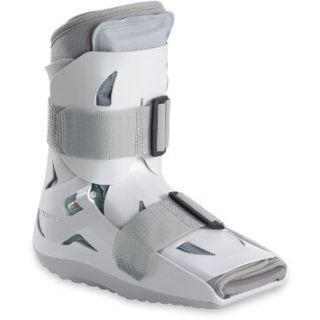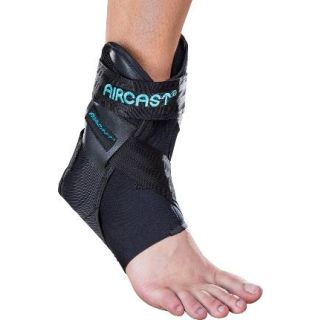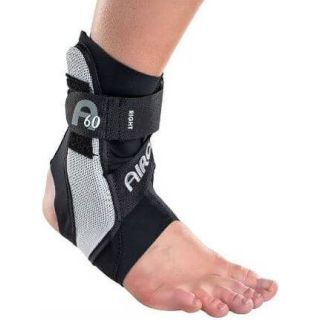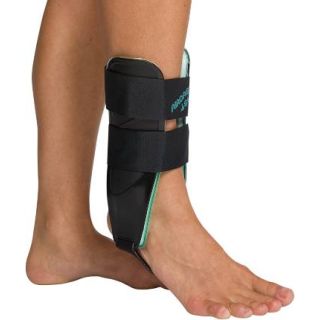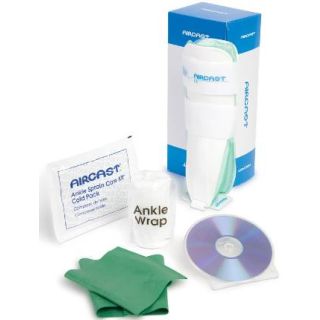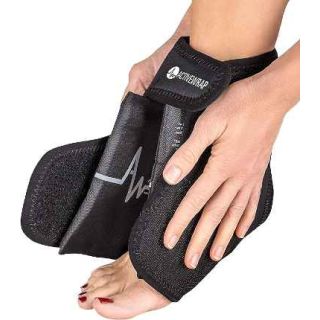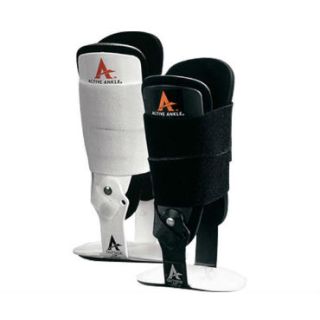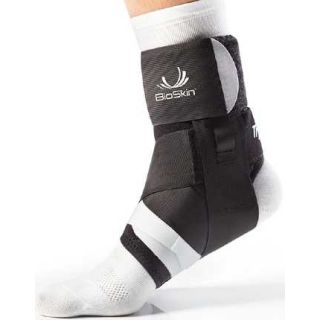Find the Right Peroneal Tendonitis Brace for Your Recovery
Peroneal tendonitis, an often painful condition affecting the tendons on the outer side of the ankle and foot, can significantly hinder mobility and participation in daily activities and sports. Whether you're an avid runner, a weekend hiker, or simply experiencing discomfort with everyday movements, finding the right support is crucial for managing pain, promoting healing, and preventing further injury.
Our comprehensive guide to understanding peroneal tendonitis braces and ankle braces specifically designed for this condition will help you to make an informed purchase that meets your individual needs.
Understanding Peroneal Tendonitis: What's Happening in Your Ankle?
Before diving into brace options, it's essential to understand the underlying issue. Peroneal tendonitis involves the inflammation or irritation of the peroneal tendons, two vital tendons that run along the outside of your lower leg, behind the outer ankle bone (fibula), and attach to different parts of your foot. These tendons play a crucial role in stabilizing the ankle and foot, controlling eversion (turning the sole of the foot outward), and assisting with plantarflexion (pointing the toes down).
Peroneal tendonitis typically develops due to sports that involve repetitive motions, or sudden increases in activity. Other contributing factors can include:
- Overpronation: Excessive inward rolling of the foot during walking or running.
- High Arches: Can place extra stress on the peroneal tendons.
- Improper Footwear: Shoes that lack adequate support or cushioning.
- Ankle Instability: Weak or previously injured ankle ligaments can force the peroneal tendons to work harder.
Sudden Trauma: An ankle sprain can sometimes lead to peroneal tendonitis.
Common symptoms of peroneal tendonitis include pain along the outside of the ankle and foot, which may worsen with activity and improve with rest. You might also experience swelling, tenderness to the touch, a feeling of weakness or instability in the ankle, and sometimes a clicking or popping sensation.
Why Use a Brace for Peroneal Tendonitis?
Ankle braces and specifically ankle braces for peroneal tendonitis braces are valuable tools in managing this condition. They offer several benefits that contribute to pain relief and healing:
- Support and Stability: A brace provides external support to the ankle joint, limiting excessive or abnormal movements that can aggravate the inflamed tendons. This stability helps to reduce stress on the peroneal tendons, allowing them to rest and recover.
- Pain Relief: By restricting movements that cause pain, a brace can significantly alleviate discomfort. The compression provided by some braces can also help to numb pain receptors.
- Reduced Swelling: Many ankle braces, particularly compression sleeves and those with adjustable straps, can help to reduce swelling by providing gentle pressure that encourages fluid drainage.
- Prevention of Further Injury: For individuals with ankle instability or those returning to activity, a brace can provide an added layer of protection against further strain or injury to the peroneal tendons.
- Aid in Healing: By creating a more stable and less irritated environment, a brace can facilitate the natural healing process of the inflamed tendons.
Navigating the Options: Types of Peroneal Tendonitis Braces
DME-Direct offers a variety of ankle braces that can be beneficial for peroneal tendonitis. Understanding the different types and their specific features will help you narrow down your choices:
- Compression Sleeves: These are typically made of elastic materials like nylon or spandex and provide mild, even compression around the ankle and foot. They are often a good option for mild cases of peroneal tendonitis or for providing support during low-impact activities. Compression sleeves can help to reduce swelling and improve blood flow, but they offer less structural support compared to other types of braces.
- Ankle Supports with Straps: These braces often feature a sleeve-like design with additional adjustable straps that wrap around the foot and ankle in various configurations, such as figure-eight patterns. These straps allow for more targeted support and compression, which can be particularly helpful for stabilizing the peroneal tendons. They offer a step up in support from simple compression sleeves and are suitable for moderate cases or when needing more specific stabilization.
- Lace-Up Ankle Braces: These braces resemble a high-top shoe and are secured with laces. They provide good overall support and stability to the entire ankle joint, limiting excessive inversion and eversion (movements that can aggravate peroneal tendonitis). Lace-up braces are a popular choice for individuals with moderate to severe tendonitis or those returning to sports and activities that require more ankle stability.
- Semi-Rigid Ankle Braces: These braces feature a combination of rigid or semi-rigid plastic or metal stays along with soft padding and adjustable straps. They offer a significant level of support and immobilization, making them suitable for more severe cases of peroneal tendonitis, ankle instability, or during the initial stages of recovery. They effectively restrict a wider range of ankle movements.
- Walking Boots (CAM Walkers): In severe cases of peroneal tendonitis, particularly if there is a tear or significant inflammation, a doctor might recommend a walking boot. These provide maximum immobilization to limit range of motion of the ankle and foot, allowing the tendons to heal properly. Walking boots are typically used for a limited period as prescribed by a healthcare professional.
Choosing the Right Brace: Key Factors to Consider
Selecting the most appropriate peroneal tendonitis brace requires careful consideration of several factors:
- Severity of Your Symptoms: The intensity of your pain and the limitations you experience will guide your choice. Mild symptoms might be adequately managed with a compression sleeve, while more severe pain and instability may necessitate a lace-up or semi-rigid brace.
- our Activity Level: If you plan to wear the brace primarily during sports or high-impact activities, you'll need a brace that offers sufficient stability and support for those movements. For everyday wear, comfort and ease of use might be more important.
- Type of Support Needed: Do you primarily need compression to manage swelling, or do you require more substantial structural support to limit ankle movement? Understanding the specific type of support your condition requires will help you choose the right category of brace.
- Comfort and Fit: You'll likely be wearing the brace for extended periods, so comfort is paramount. Look for breathable materials that won't cause excessive sweating or irritation. Ensure the brace fits snugly but not too tightly, allowing for proper circulation. Consider the ease of putting on and taking off the brace, especially if your ankle is particularly painful.
- Adjustability: The ability to adjust the compression and level of support can be beneficial. Braces with adjustable straps allow you to customize the fit and provide targeted support where you need it most.
- Durability and Quality: Invest in a brace made from high-quality materials that are designed to withstand regular use. Check reviews and consider brands known for their reliability.
- Doctor's Recommendation: The most crucial factor in choosing a peroneal tendonitis brace is consulting with your doctor or a physical therapist. They can accurately diagnose your condition, assess its severity, and recommend the most appropriate type of brace based on your individual needs and treatment plan. They can also advise on the proper fit and duration of use.
How to Properly Use Your Peroneal Tendonitis Brace
Once you've selected a brace, it's essential to use it correctly:
- Follow Manufacturer Instructions: Always adhere to the specific instructions provided by the brace manufacturer regarding application, wear time, and care.
- Don't Over-Tighten: While the brace should be snug, avoid over-tightening, which can restrict blood flow and cause further discomfort.
- Gradual Introduction: If you're new to wearing a brace, gradually increase the amount of time you wear it each day to allow your ankle to adjust.
- Maintain Proper Hygiene: Regularly clean your brace according to the manufacturer's instructions to prevent the buildup of bacteria and odors.
Beyond the Brace: A Holistic Approach to Recovery
Remember that a peroneal tendonitis brace is often just one component of a comprehensive treatment plan. Your doctor or physical therapist may also recommend:
- Rest: Avoiding activities that aggravate your symptoms.
- Ice: Applying ice packs to the affected area to reduce pain and inflammation.
- Physical Therapy: Exercises to strengthen the peroneal muscles, improve ankle flexibility, and restore proper biomechanics.
- Medications: Over-the-counter or prescription pain relievers and anti-inflammatory drugs.
- Orthotics: Custom or over-the-counter arch supports to correct foot alignment issues.
Conclusion: Choosing the Right Path to Recovery
Selecting the best peroneal tendonitis brace involves understanding your specific condition, considering your activity level, and weighing the different types of support available. While compression sleeves offer mild support and swelling reduction, lace-up and semi-rigid braces provide more substantial stability for moderate to severe ankle injuries.
Always prioritize comfort, proper fit, and the guidance of your healthcare professional. By making an informed decision and integrating the brace into a comprehensive treatment plan, you can effectively manage your peroneal tendonitis, reduce pain, and take significant steps towards a full and active recovery.
 Details$114.99 $52.00
Details$114.99 $52.00 Details$47.99 $38.99
Details$47.99 $38.99 Details$54.99 $44.99
Details$54.99 $44.99 Details$46.99 $31.99
Details$46.99 $31.99 Details$60.99 $51.99
Details$60.99 $51.99 Details$45.99 $31.99
Details$45.99 $31.99 Details$32.99
Details$32.99 Details$69.95 $67.40
Details$69.95 $67.40
